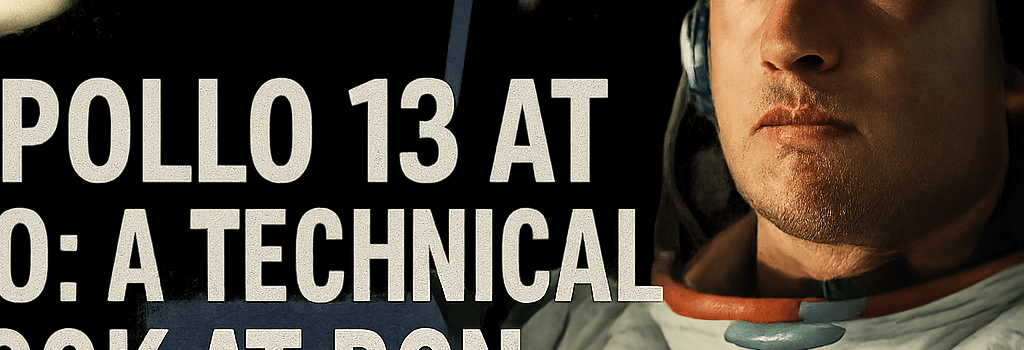Apollo 13 at 30: A Technical Look at Ron Howard’s Film

Introduction
Ron Howard’s 1995 film Apollo 13 remains a stirring homage to NASA’s lunar program. While it takes a few historical liberties, its portrayal of spacecraft hardware, mission control procedures, and human ingenuity still inspires awe three decades on. This retrospective delves deeper into the film’s technical underpinnings, compares Hollywood storytelling with mission reality, and examines the legacy of Apollo 13 on today’s space exploration efforts.
Historical Overview
Apollo 13 dramatizes the 1970 near-disaster of NASA’s third lunar landing attempt. The real mission, designated AS-508, launched on April 11, 1970. Two days in, an oxygen tank in Service Module 109 (“Odyssey”) exploded, crippling the Command and Service Modules (CSM) and forcing the crew to use the Lunar Module (“Aquarius”) as a lifeboat.
Hollywood Liberties vs. Historical Record
The film compresses timelines and heightens drama—Mission Control’s tense countdowns, Jack Swigert’s “Houston, we’ve had a problem,” and the re-entry sequence are edited for narrative impact. In reality, real-time telemetry, multiple redundant checklists, and calm coordination underpinned the rescue.
“The movie gets some details wrong, but it captures the spirit of problem-solving that defined Apollo,” NASA historian Dr. Ellen Stofan observed in a recent oral history.
Technical Deep Dive
Command Module CM-109 “Odyssey” Specifications
- Dry mass: 12,250 kg (27,000 lb)
- Service propulsion engine thrust: 91 kN (20,500 lbf)
- Fuel cells: 3 × 1.03 kW, providing 6.2 kW total power
- Onboard computer: Apollo Guidance Computer (AGC), 2 kHz processor, 64 KB memory
Lunar Module LM-7 “Aquarius” Specifications
- Ascent stage mass: 4,700 kg (10,300 lb)
- Descent engine thrust: 45 kN (10,000 lbf)
- Environmental control: lithium hydroxide canisters, 1.1 kW power draw
Life Support and Power Systems
After the Service Module explosion, crew power and CO2 removal relied entirely on the LM’s systems. This presented a risk: the LM was not designed to support three astronauts for the return trajectory. Engineers on the ground jury-rigged cartridge adapters to fit Command Module CO2 scrubbers into the LM’s round receptacles.
Mission Simulations and Real-Time Telemetry
Filmmakers consulted NASA archives to recreate flight trajectories and ground-station communications. However, actual mission simulations used analog computers and patch-panel data buses, not CGI. Real controllers tracked over 150 telemetry channels at Telemetry, Electrical, and Communications (TE&C) consoles—far more granular than the film suggests.
Legacy and Influence on Future Lunar Programs
The ingenuity displayed during Apollo 13’s crisis informed later spacecraft design, including redundancy in ESA’s Orion service module and NASA’s upcoming Artemis missions. Modern avionics employ radiation-hardened multi-core processors, error-correcting memory, and advanced life-support recycling inspired by lessons learned in 1970.
Expert Opinions
- Dr. Robert Pearlman, space journalist: “Howard’s film rekindled public interest in deep space exploration and underscored the importance of systems engineering.”
- John Shepard, former NASA flight director: “The movie’s pacing isn’t perfect, but it communicates the mission’s complexity and the teamwork that saved three lives.”
- Anna Lee, aerospace engineer: “Seeing Apollo’s AGC on screen reminds us how far computing has come—today’s spacecraft carry gigabytes, not kilobytes.”
Conclusion
Thirty years after its release, Apollo 13 endures as both a cinematic triumph and a case study in crisis engineering. By comparing its dramatization with mission blueprints and expert testimonies, we honor the real-world achievements that continue to propel humanity toward the Moon and beyond.